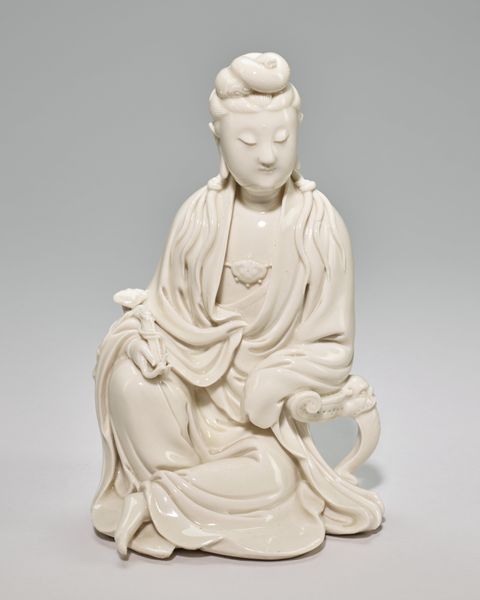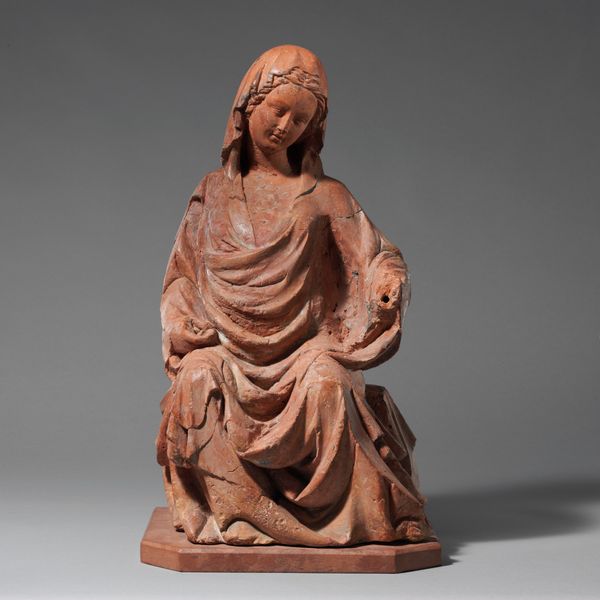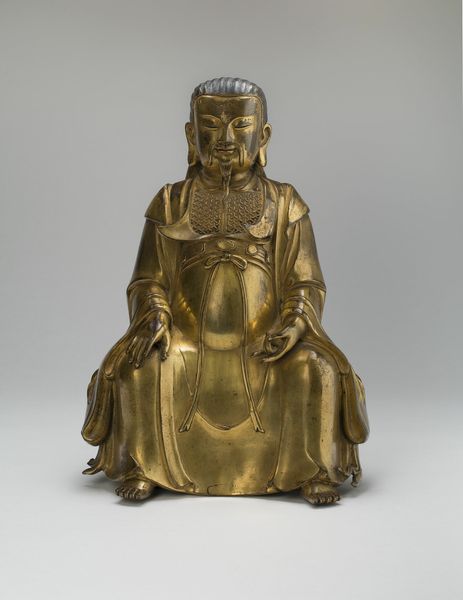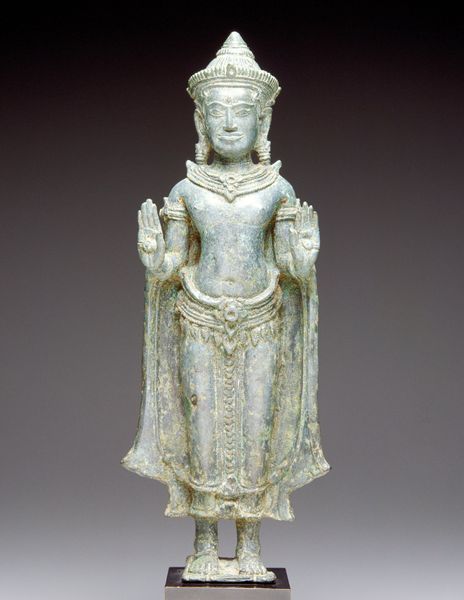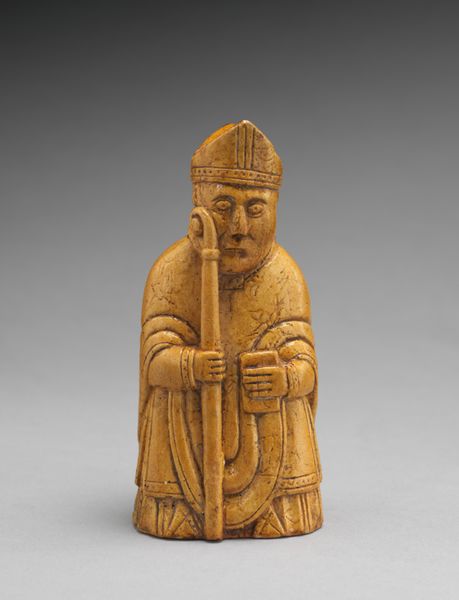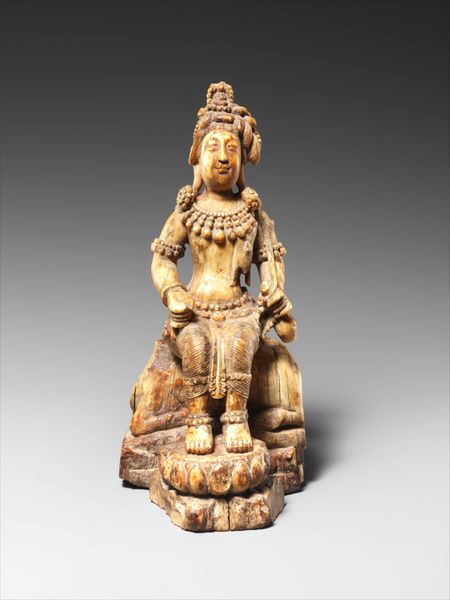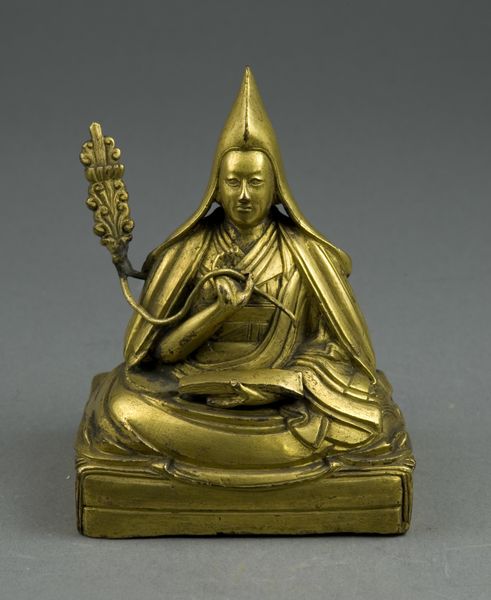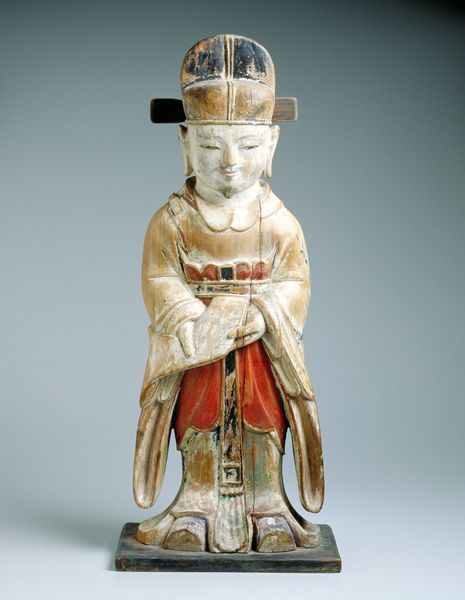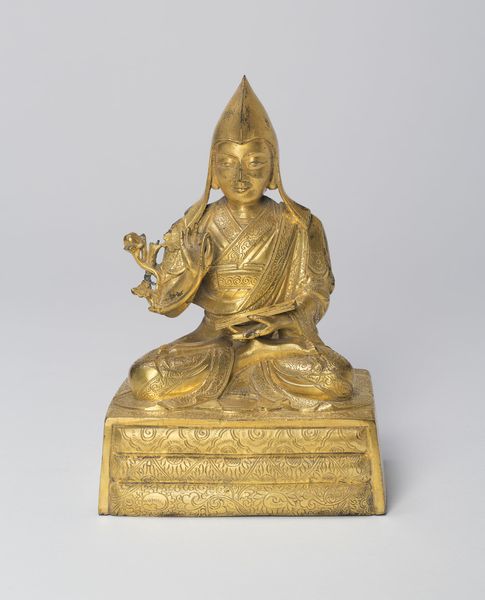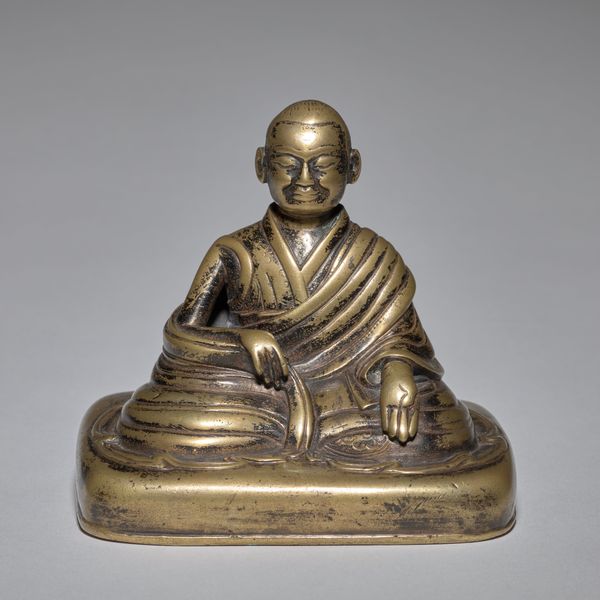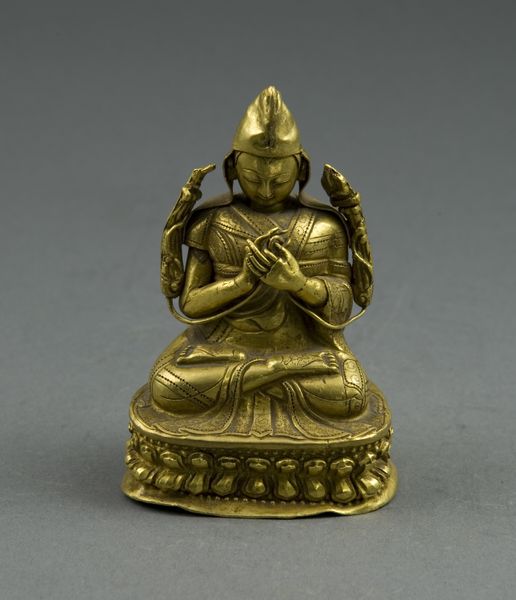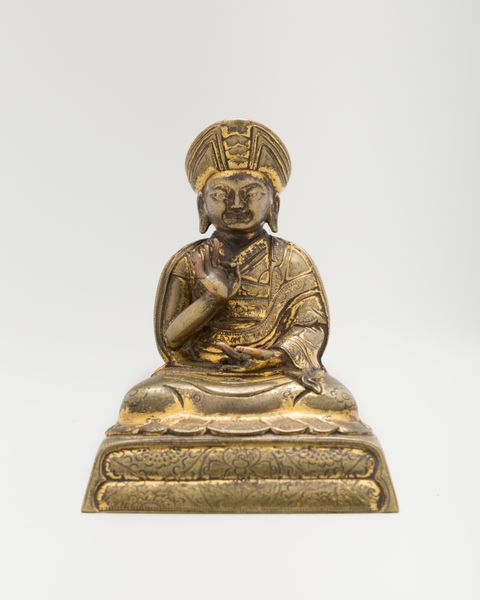
ceramic, sculpture
#
portrait
#
sculpture
#
asian-art
#
ceramic
#
figuration
#
sculpture
#
decorative-art
Dimensions: Overall (confirmed): 14 3/4 × 4 × 4 1/8 in. (37.5 × 10.2 × 10.5 cm)
Copyright: Public Domain
Editor: Here we have a ceramic sculpture titled "Guanyin," crafted between 1710 and 1713 by the Meissen Manufactory. The glossy texture is compelling. How would you interpret this work through a formal lens? Curator: The work immediately strikes one with its pronounced verticality. The figure rises, almost aspirational, and this is emphasized by the linear flow of the drapery. Do you notice how the folds articulate the surface, creating a complex interplay of light and shadow? Editor: Yes, the curves and lines really create an ascending movement for the eye. And that rich chocolate-brown glaze is quite interesting! Curator: Indeed, the monochrome glaze flattens the form while simultaneously accentuating its three-dimensionality through tonal variations. The simplification encourages a reading of form over surface detail. Observe, too, the subtle use of gilding. Do you think that adds or detracts from the formal composition? Editor: It subtly highlights certain focal points, drawing the eye to the chest and base without disrupting the overall harmony. I think it actually adds value to the viewing experience. Curator: Precisely. One can discern a conscious decision to limit ornamentation to enhance, not overwhelm, the structural integrity. Notice how the cloud base mirrors, in a miniaturized fashion, the topknot and enhances the overall effect of the statue. How does all that contribute to an understanding of this sculpture's significance? Editor: By focusing on pure form, line, and shape, we can see it almost like an exercise in aesthetics. Focusing only on its material make-up elevates it. It also highlights how form can carry more meaning than just cultural representation. Curator: Yes, examining such artwork through rigorous formal analysis allows us to really discern the visual mechanics, almost beyond any other interpretive approach.
Comments
No comments
Be the first to comment and join the conversation on the ultimate creative platform.
